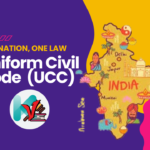About Indra Sawhney Vs Union of India
Overview of Indra Sawhney v. Union of India (1992)
Often referred to as the Mandal verdict, this case stands as a pivotal moment in Indian constitutional and reservation law. It was adjudicated by a nine-judge bench of the Supreme Court in 1992, arising from a public interest litigation that contested the implementation of the Mandal Commission’s recommendation to grant 27% reservations to the Other Backward Classes (OBCs) in central government employment.
Background and Origin
In 1979, the Janata Party government constituted the Mandal Commission (Second Backward Classes Commission) to identify and report on India’s socially and educationally disadvantaged classes. Submitting its report in 1980, the Commission proposed a 27% quota in central government jobs for these communities.
When the V. P. Singh government moved to implement these recommendations in 1990, it sparked widespread opposition, especially from upper-caste groups, who viewed the move as a case of reverse discrimination. The controversy led to a PIL being filed in 1991, spearheaded by Indra Sawhney, challenging the constitutional validity of the decision, primarily on the grounds of violating Article 14 — the right to equality.
Progression and Decision
What began with a two-judge bench eventually escalated to a full nine-judge constitutional bench. The case was argued extensively and decided by a 6:3 majority in 1992. The court scrutinized the constitutional principles surrounding equality, affirmative action, and administrative efficiency.
The Mandal Commission had estimated that around 52% of India’s population fell under the category of “socially and educationally backward classes.” It therefore proposed an additional 27% reservation, supplementing the existing 22.5% for SCs and STs.
Key Findings of the Judgement
- The Court upheld the constitutional validity of the 27% reservation for OBCs.
- It declared that any community eligible for reservation must be both socially and educationally backward.
- A significant precedent was set by capping the total reservation limit at 50%, referencing the M.R. Balaji v. State of Mysore (1963) case. This cap, however, could be exceeded in “extraordinary circumstances.”
- The ruling emphasized that reservation must not compromise administrative efficiency — a constitutional goal.
- The justices clarified that while caste could be a factor in identifying backwardness, it must be paired with social and educational disadvantage validated through objective data.
- The executive orders (Office Memorandums) implementing the Mandal recommendations were deemed constitutionally valid.
Impact and Legacy
This judgement laid down the foundational principles for reservation policies in India post-1992, balancing affirmative action with constitutional mandates for equality and efficiency. It also reinforced the interpretation of Part III of the Constitution as a tool for rectifying systemic historical inequalities.
Key Questions in the Indra Sawhney Case
- Can the State provide reservations solely based on caste?
- Is the 27% reservation for OBCs constitutionally valid?
- What is the meaning of “socially and educationally backward classes”?
- Is there a constitutional limit to the percentage of reservations?
- Can economic criteria alone be the basis for reservation?
- Are reservations in promotions constitutionally valid?
- Is the Mandal Commission’s data and classification scientifically valid?
- Do reservations violate the principle of administrative efficiency?
- Are executive orders sufficient to implement reservation policies?
- Can the judiciary impose limits or guidelines on the extent and manner of reservations?

Conclusion
TheIndra Sawhney v. Union of India case remains a cornerstone in India’s constitutional law on affirmative action. It upheld the constitutionality of OBC reservations while setting a precedent by capping total reservations at 50%, except in exceptional cases. The judgment struck a balance between social justice and administrative efficiency, clarifying that caste can be a factor—but not the sole basis—for determining backwardness. It continues to influence reservation debates and policies to this day.
Sources : https://testbook.com/ias-preparation/indra-sawhney-case-1992-sc-judgements , https://indiankanoon.org/doc/1363234/


